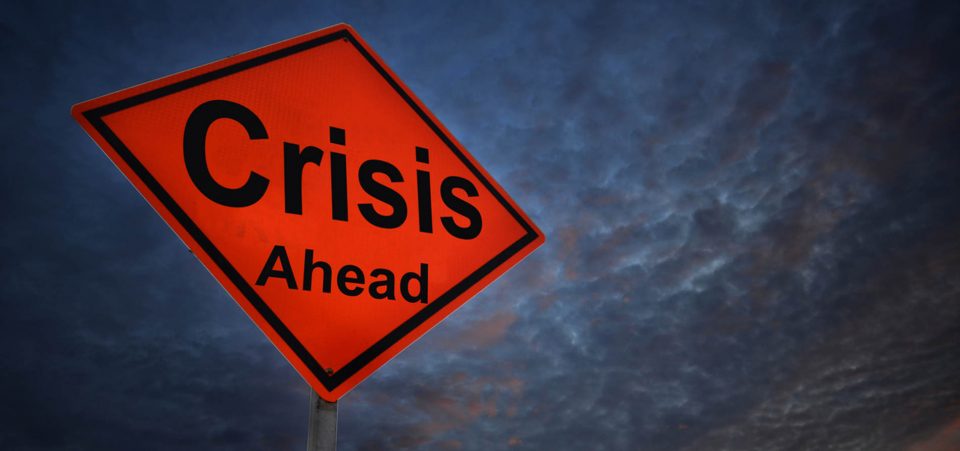The Fed Might Be Using the Rate Hike to Control the Next Market Crash
Has the U.S. Federal Reserve become completely crazy? The Fed has raised the nominal interest rate three times since December 2016, and it has announced further increases for the coming months. Either the Fed has become crazy, testing the limits of risk, or it knows that a major market crash is coming, and has decided to use an interest rate hike to try to control and limit the damage, rather than allowing a stock market crash.
When the Federal Reserve lowers interest rates, it becomes cheaper to borrow money, which tends to stimulate economic activity. But when the Federal Reserve increases rates, it becomes more expensive to borrow money, which leads to a slowdown in economic activity. So, why does the Fed suddenly decide to raise interest rates when the U.S. economy is already showing signs of slowing down?
Also Read:
The Janet Yellen Rate Hike Could Unleash U.S. Financial Collapse 2017
U.S. Interest Rate Prediction for 2017 Means a Return to High Stakes Risk
The Fed may have made its biggest economic mistake since the last financial crisis. The flow of credit has never reached such a critical threshold in the U.S. economy. The sudden increase in interest rates could end up increasing the amounts to be repaid on variable rate mortgages, automobile loans, and—of course—debt from credit cards. Needless to say, this will clearly slow down the U.S. economy, even as the recent GDP growth rate of 1.7% is just about half of what President Donald Trump was expecting.
Americans Are Loaded with Debt
American consumers who have debt on credit cards, variable rate mortgages, and home equity lines of credit are most likely to be impacted by higher rates. The Fed has already raised rates, starting in December 2015. What will take everybody by surprise is the effect of the expected series of rate increases in 2017. (Source: “How the Fed rate hike will affect your finances,” CNBC, June 16, 2017.)
Meanwhile, auto loans and auto loan defaults are creating a special problem all on their own. The bankers may have tamed the beast of the subprime mortgage, yet analysts have just started to grapple with the risk of subprime auto loans. Auto sales have benefited from the availability of consumer credit for auto purchases from secondary lenders.
In an effort to show they learned their lesson, the big banks have been less inclined to lend to higher-risk borrowers. But secondary lenders have tapped into this plentiful market, issuing loans at higher rates. The result is that the default rate on such auto loans was already starting to increase before the Fed raised its rates. In basic terms, it would be fair to say that the sequel to the subprime risk crisis of 2008 is back. This second edition of the dubious phenomenon is the auto subprime loan.
The number of Americans who stopped paying back their auto loans appears to be increasing. That will discourage banks and secondary credit companies from lending. Car sales have already started to slow down in the past few months. The inevitable tightening of credit, just as in 2008/2009, will force the U.S. economy to stall.
Defaults on auto loans (subprime) have increased in recent months. Some estimates suggest that over a trillion dollars in auto loans are outstanding. (Source: “Auto loan delinquencies rise as drivers splurge on pricey cars,” CNBC, June 13, 2017.)
Allegedly, many of these drivers have been able to avoid delinquency, keeping up with payments. But, just as with the subprime mortgage crisis, all it takes is a few fractions of a point higher in interest rates to crack the balance.
This increase in rates would only help accelerate the demise of the retail and consumer sectors. No car loans mean that car manufacturers will have fewer customers buying their cars. Meanwhile, the American economy is also struggling with the collapse of the retail industry. Many department store sales have disappointed, and some big brand names, like Saks Fifth Avenue, which is owned by Hudson’s Bay Co (TSE:HBC), have announced major store closures.
Much has been said about an economic recovery in the United States having started in 2009. Few will believe that the recovery ever happened. Surely, the stock market has gone up, but not everyone has benefited. U.S. consumers have been struggling to make ends meet. The interest rate hike is premature, and will hurt those consumers. Many can’t afford to pay for a $500.00 sudden expense. Higher interest rates on their considerable debt loads will send them over the brink.






